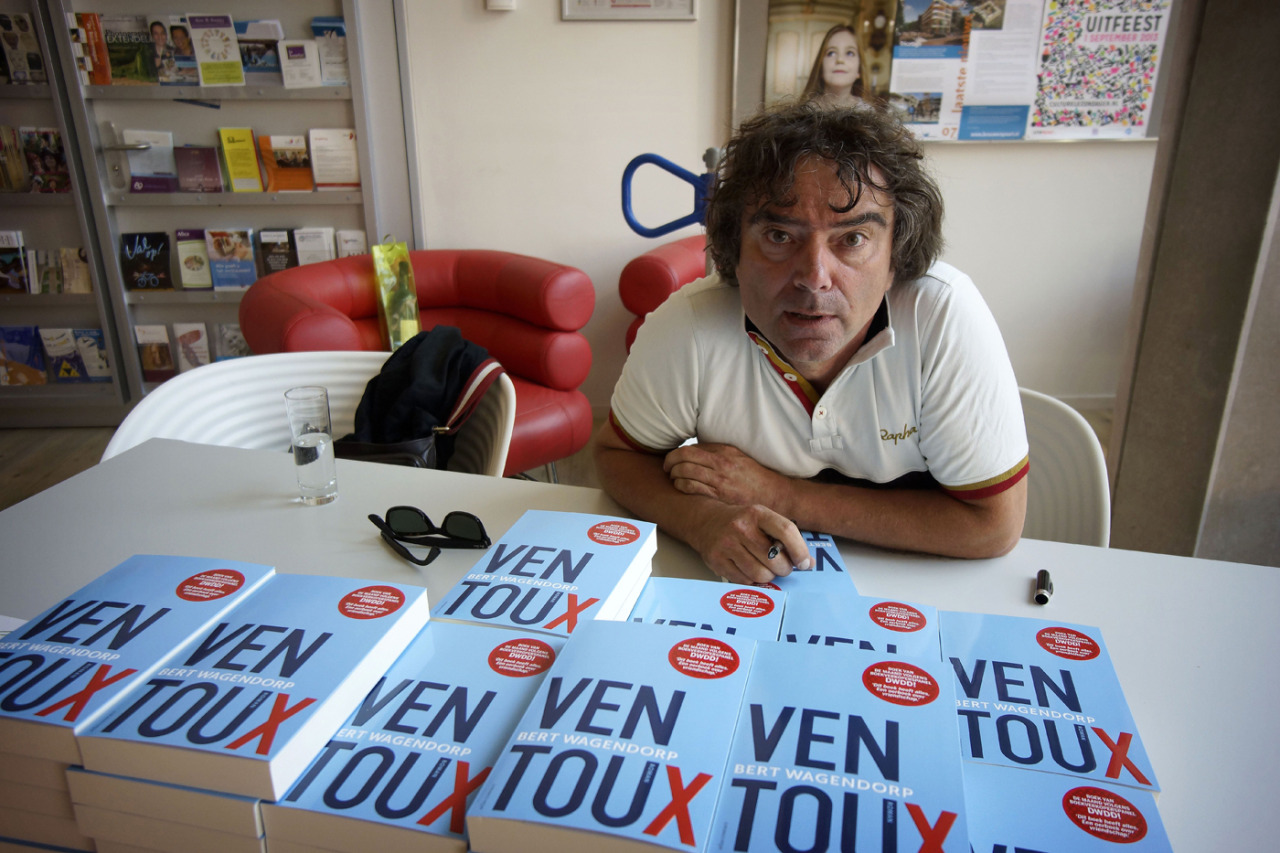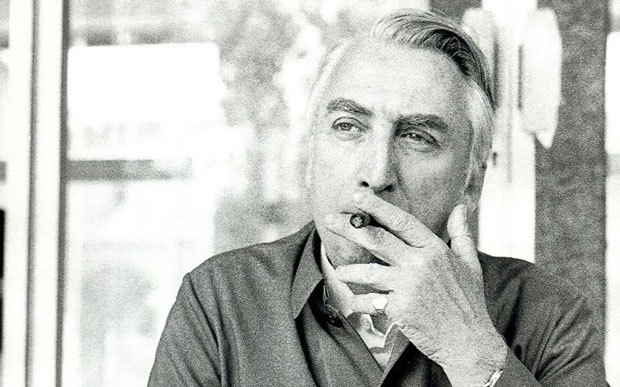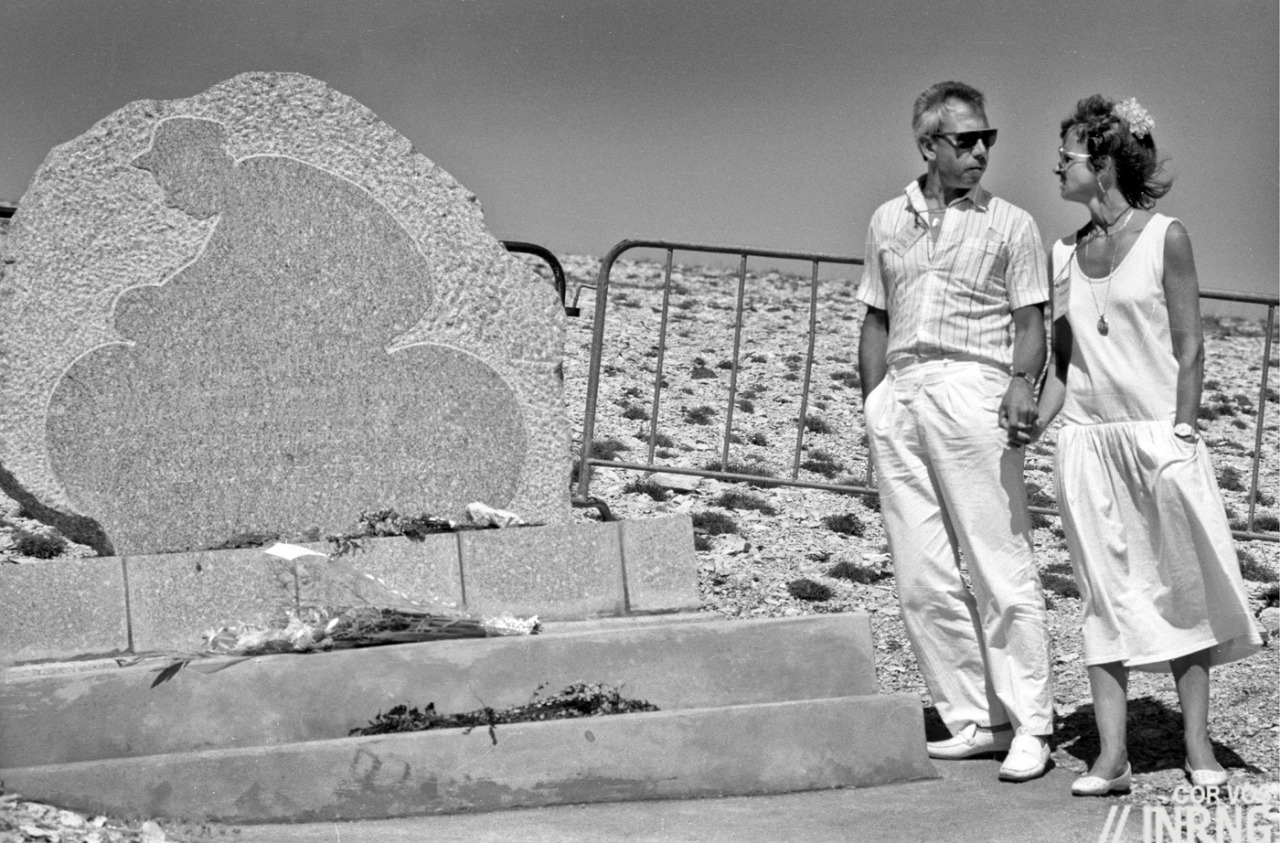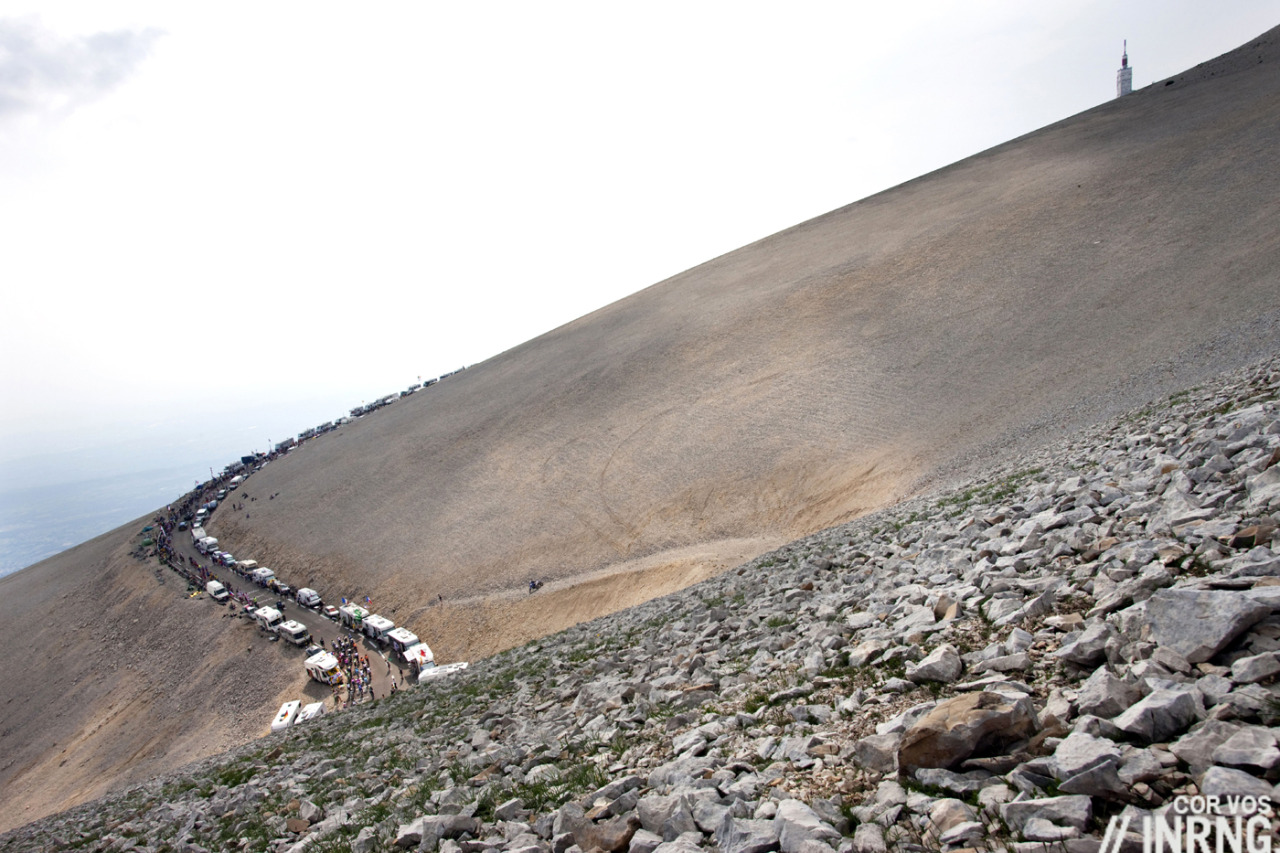A recent geographical survey says Mont Ventoux is not as high as previously thought. The road at the top is lower than 1900m despite signs proclaiming it sits at 1911m. It’s tempting to imagine Mont Ventoux collapsing under the weight of clichés piled on every time the Tour de France visits. It’s telling that if nobody can agree the height then there’s space on the mountain for dreams, mysteries and more. No other venue seems to capture the imagination.

There’s confusion about the summit’s height and it’s all on display. One sign says 1911m above sea level, another 1910m, another 1909m and in case you think this could be a matter of how high these signs and their poles sit, the milestone on the ground says 1912m. This discord meant that cyclists and others looking to try record attempts and measure vertical gain have needed an accurate number and recently a survey was conducted to establish the exact height. It turns out the highest point of the road is more likely 1899m.
We’ll see if the signs, commemorative T-shirts and mini-milestone souvenirs corrected. For accuracy’s sake it should happen. Precedent says they’ll stay: look at the Col de la Madeleine where the sign proudly proclaims 2000m when actually the pass sits at 1993m. We’re suckers for imagining, or wanting to imagine, that something is greater than its reality. It’s here that Mont Ventoux sits above everything else in the sport, no other place occupies such an elevated position in cycling’s mythology. Put aside trigonometry and elevation calculations, Ventoux is the height of hype and mythology.
Each visit of the Tour is accompanied by the same stories being wheeled out, a veritable Ventoux bingo. These don’t get too tiresome as one factor behind the mountain’s special status is its scarity, it’s only been 15 times since 1951, less than once every four years. It’s not as mundane as the Tourmalet nor as familiar Alpe d’Huez.

Many claim it’s unique, that there’s no landscape like it but reach the summit on a clear day and you see other limestone peaks and ridges around. The nearby Montagne de Lure even has a road to the top. Granted it’s not as stunning but it is there for comparison. Ventoux generates its own fiction, its own imagination. Bert Wagendorp’s novel “Ventoux” is barely about the mountain but it seems to play a role of being the opposite to everything found in the Netherlands with its elevation, heat and desolation. The mountain seems to encourage many to lose their senses with talk of spirits, ghosts, mystery and dwindling oxygen as if gripped by summit fever or vertigo.

No passage about or over the Ventoux seems complete without a quote – or rather the quote – by Roland Barthes. A French philosopher, in his 1957 book Mythologies Barthes says Ventoux is “ le dieu du Mal, auquel il faut sacrifier“, “a god of evil to which sacrifices must be made”. Mythologies is a collection of essays where Barthes jumps from subjects like soap power marking, to plastics, to the consumption of steak and chips with the agility of a sprinter hopping from wheel to wheel with 500m to go. Only Barthes doesn’t really bring much, often it feels he is wheeled out in time for Mont Ventoux because he’s a philosopher, some intellectual polish rather than the application of his thoughts on consumerism, the media or sport. His critique on the Tour de France is really a musing on psychogeography and how the race homogenises France.

Another part of the myth is the death of Tom Simpson in 1967. There’s something grisly about death adding to the notoriety of the mountain. Is it not similar, in some diluted way, to the way climbing past frozen bodies is part of the experience of conquering Everest, that to reach the top is to achieve something not everyone has managed? But did Mont Ventoux kill Simpson? This isn’t the place for a post mortem but let’s acknowledge that a combination of alcohol, amphetamines, heat, exhaustion, gastric woes and personal constitution did it for Simpson. Ventoux is a component of the exhaustion factor but it could have been another road, another mountain too. There’s nothing inherently lethal about Mont Ventoux.
The Simpson memorial is odd too, we want to show respect to the fallen cyclist but at times it looks like a collection point for cycling waste. In 2000 Jean-Louis Le Touzet of Libération, a French newspaper, made an inventory of the objects:
- Six caps
- Seven tubular tires
- An Italian saddle
- A licence from the French mountaineering federation belonging to Sylvie Reverend
- A pair of glasses
- A Michelin tire lever
- A shoe cleat
- A bottle cage
- 11 water bottles weighed down with stones
- Two pairs of gloves
- A McDonalds dinosaur
- A matchbox from the hotel Steffani in Saint Moritz
- A tiny bicycle in a box
- A measuring tape
- A decal of the Belgian cycle touring federation
- Two unused Chupa Chups
- the business card of a member of a Dutch team with his phone number
Le Touzet wrote all that’s missing is a mail box; perhaps a waste bin would be equally useful? It boggles the mind that someone was passing with a spare saddle, let alone the thought process that brought them to deposit it out of commemoration. The sentiment might be touching but the collection of cycling sundries just makes it an unusual place.
It’s said Simpson collapsed lower down the road, approximately two kilometres from the top but the location of his memorial is closer to the summit, about a kilometre, as if to suggest he was almost within touching distance of the summit.
No, forget the ghosts, philosophers and mortal history. What is unique and special about Mont Ventoux is the factual, the obvious. In trying to shroud the summit in myth we overlook the geological wonder of a limestone peak with a road across the top. All the other legendary mountains in cycling are not mountains but mere passes. We exploit the conceit of the “summit finish” when we really mean a finish line drawn in a ski resort rather than atop a peak. The likes of the Galibier, Tourmalet, Stelvio are the low points used to cross over a mountain range. Antoine Blondin put it well:
“The traditional mountain passes are, by definition, crossing places. They’re placed on the rider’s route with a military function stripped of all true sadism: you go over them because it would be difficult to do otherwise and even the most miserable person would say you might as well go over this way. The ascent of Mont Ventoux offers a ferocious gratuity.”
– L’Equipe, 11 July 1974
This is what makes Ventoux special, the way it stands proud of the landscape, its independence. Given the Puy de Dôme is now inaccessible to the Tour it’s the only high peak left with topological prominence.
Conclusion
It’s just a mountain with a road to the top. Given nobody can agree on the height no wonder there’s space on the mountain for tales of mysticism and more. It’s as if the white summit is a blank canvas, that Mont Ventoux is whatever you want to make it with tales of death, essays on philosophy and more appearing every time the Tour visits, a kind of summit fever that no other mountain generates. It’s all enjoyable and profitable too: today’s L’Equipe says Bédoin, the small town at the foot of the mountain, has 310 inhabitants and welcomes 200,000 cyclists a year, many keen to experience the legend for themselves.


Don’t forget the Petrarca cliché 😛
I didn’t want to do them all, “Géant de Provence”, “Mallejac”, “Eros Poli”, “Elefantino” etc but someone could do one of those bingo cards with all the usual themes.
‘Grisly’ not ‘grizzly’
Unless you’re adding bears to the mythology
Ha, they have wolves in and around there but no bears.
Boars, too – and they’re just a typo away from beardom?
One additional function they have is this: These things like the Tour de France, the Ventoux or the Mona Lisa stand out, because they are universally known translations. Like anchors. I say “Tour de France” and you know what I talk about. Everybody knows that I talk about cycling. While “Paris-Tours” could as well be a carrace. Btw, it always happens, when I mention that I like cycling. The conversation goes like this: Me (slightly ashamed): “Yeah, I like cycling” The other person “Oh, me too, I like the Tour de France” (they never say “Paris-Roubaix” or “Giro d’Italy” and of course in the next sentence we come to the doping and the skinny people stuff).
The Tour, the Ventoux, the Mona Lisa and other things are universally known translations for cycling, humanity vs nature, fine art. They bring us together, on the same page, therefore we, and everybody reporting about something, looks for these anchors that make things accessible for everybody without describing them in thousand words. The interesting question would be: Why becomes one thing a symbol and another not?
Interesting point, worthy in a way of Barthes and our approach to consuming sport and culture, there is one anchor or icon for the sport.
Thanks. Now that I can read more than a postcard in french, I may tackle “Mythologies” as it was written. Translations are good things, but they invariably change what they translate. For example: In german the book is titled “Mythen des Alltags” which in truth already is an interpretation of the book, or the intent of it, itself and totally different to the title “Mythologies”, which is a much wider context and sort of speaks to a general human behaviour. Or something like that.
I rode the Etape up Ventoux in ’09. The whole experience of the ride from Bedoin to the top made it “mythical”: the lovely shaded road through town; the sense of impending doom on the drag up to Les Bruns; the stifling, airless heat of the forest; the unrelenting gradient; the momentary joy of the short flat at Chalet Reynard; the left hand bend and then ramp as if into space past the Chalet onto the “moonscape”; the sinuous road ever up with the weather station dangling in sight; the wind; the final hair pin ramp. Seven years on I remember it clearly. Maybe not the biggest, hardest or most picturesque but certainly as memorable as any.
You know what they say: “when the legend becomes fact, print the legend.” Of course, this being France, no one can agree on the facts, so let’s all just go have a glass of wine.
+ 1, We most certainly agree that God when she was creating Ventoux was thinking of cycling.
Semnoz is also a true summit, no?
Does anyone know why the race always uses the ascent from Bédoin and never the other road from Malaucène?
Apparently this road is slightly wider, has a better surface and roughly the same average gradient but with a more varied sequence of false flats and 12% ramps. This could appeal to Prudhomme’s tendency towards mixing up the course a bit.
One suggestion is logistics, when the race uses the summit finish and the road from Bédoin it uses the Mont Serein ski station on the Malaucène road as a base for all sorts of logistics eg parking team buses and more.
The race as only once climbed up from Malaucène but I’d recommend it to many, the equal to the Bédoin climb; more direct from the start and some great views along the way.
Bit of a Cromwellian stripping of the altars there. But I agree that the Simpson tragedy gives it a fierce and morbid reputation that exceed the true danger to life it presents. However, a lot of the memorabilia that I have seen at the memorial seem to have been sentimental trinkets, but also momentos to people who have died (though it’s not apparent whether they form part of a rising body count to the mountain).
The ride up from Bedoin (of the three road climbs) is epic for its location – Ventoux really does stand out once you know what it is, you can see it from Chateauneuf-du-Pape – but also terrain. The climb through the forest to Chalet Reynard is suffocating, disorientating and steep, while the limestone drag is no less vertiginous, but wind whipped and scorched. The cyclists of the Tour recognise its power, and I cannot think of another more fitting epithet than Lance calling his nemesis that ‘f@*king mountain’.
It’s only a mountain, so it’ll only kill you if you’re ill-prepared to take it on, but never to be taken lightly.
> All the other legendary mountains in cycling are not mountains but mere passes.
I don’t think it’s quite as legendary, but it’s no unknown, either: Monte Grappa. It’s not quite as high, but it’s certainly a brutal climb.